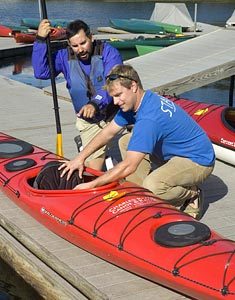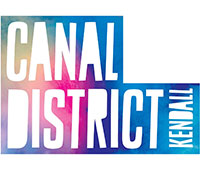 Choosing a kayak is like choosing shoes: you need to find the style that fits your needs and the size that fits your body. At Charles River Canoe & Kayak, we paddle all the boats we sell, and we’ve been helping Greater Boston choose canoes and kayaks for decades. We will work with you to find the kayak that will work best for you. Plus, our on-the water facility allows you to try out any boat we have in stock for free, so you can be sure about your choice.
Choosing a kayak is like choosing shoes: you need to find the style that fits your needs and the size that fits your body. At Charles River Canoe & Kayak, we paddle all the boats we sell, and we’ve been helping Greater Boston choose canoes and kayaks for decades. We will work with you to find the kayak that will work best for you. Plus, our on-the water facility allows you to try out any boat we have in stock for free, so you can be sure about your choice.
Before you come in, though, it will help to sit down and think about the questions below. Some of the questions will educate you on many of the options available on today’s kayaks, while others will help you identify the type of paddler you are and therefore the type of kayak you might need. Together, they’ll help us find the perfect kayak for you. As always, if you need some help, come talk to us — stop by our Paddling Store or e-mail us!
What You Should Think About
Where might you want to paddle?
The type of water you wish to paddle will help you decide what type of kayak to buy. Think about where you want to paddle not just now, but also in the future after taking some classes to expand and improve your skills. Choose all that apply:
- gentle rivers and small lakes (e.g. the Charles River from our Newton Boathouse)
- large lakes or protected ocean (e.g. Essex Marsh; or Squam Lake, NH)
- open ocean (e.g. trips to the Boston Harbor Outer Islands)
- whitewater rivers (e.g. Zoar Gap on the Deerfield River)
Do you want to paddle your own kayak, or share a boat with someone else?
- single kayaks (for one person) allow the freedom of paddling your own boat and have more storage space per person, plus you don’t need to rely on a friend to go paddling
- tandem kayaks (for two people) tend to be more stable and cost less per person, plus they’re a great way to paddle together if the two kayakers are of different abilities
How much storage space might you need?
Think carefully about how you see yourself using your kayak in the future, like whether you will mainly do day-trips or might like to kayak-camp regularly. Your storage requirements will be determined by how you use the boat.
- many kayaks have hatches — storage compartments that are more or less watertight
- kayaks designed for longer trips, like overnights, have more and bigger hatches
- hatches also provide flotation when capsized to prevent the boat from sinking
- it is much easier to perform rescues on kayaks with both front and rear hatches than on kayaks with only a rear hatch or no watertight hatches
Will you use your kayak for any specialized activities?
- fishing
- surfing
- scuba diving or snorkeling
- photography
- paddling with your dog
What You Should Know
How does a kayak’s hull shape affect boat performance?
The hull shape has many effects on a kayaks’s performance, both in flatwater and ocean conditions. Two effects of hull shape that a paddler can readily feel are:
- initial stability — how stable does the boat feel when it is flat on the water?
- secondary stability — how easy is it to lean the boat on its edge, and how stable does it feel when leaned?
How does kayak width (beam) affect boat performance?
- wider boats generally have more initial stability than narrower boats
- wider boats are generally slower and less efficient than narrower boats
How does the size of the cockpit opening affect my paddling?
The two main classes of cockpits are “closed” and “open,” based on how firmly your knees are braced inside the boat. This decision is largely one of personal preference.
- in a closed cockpit, the paddler keeps the knees under thigh braces, allowing better transfer of movement from paddler to kayak
- in a closed cockpit, the paddler might feel better balance and “connection” to the boat, which allows more control and better performance
- in an open cockpit, the paddlers knees are not constrained, allowing easier entry and exit from the boat from land and in the water
- open cockpits are ideal for someone who wants to fish, take pictures, or paddle with their dog, because of the increased freedom of movement and additional storage space right in front of you
- in our experience, capsized paddlers not using spray skirts have little trouble exiting either type of cockpit
What materials are used to make kayaks?
There are three principle materials used to construct most of today’s kayaks. Your choice of materials is, again, a trade-off between several factors described below.
- polyethylene – Inexpensive and very resistant to impact, polyethylene is used for most plastic kayaks and by Old Town in their Discovery and Guide series of canoes. The material is heavy and scratches easily. Because it lacks the stiffness of other boatbuilding materials, the shape of a polyethylene boat can become deformed as it ages. Choose polyethylene if you want to save money and are looking for high impact resistance.
- thermoformed plastic – Lighter and stiffer than polyethylene, thermoformed boats are more expensive but have a longer life span and are less likely to deform. These boats approach the weight, look, lines, and lively performance of composite boats at a lower price. You’ll hear different manufacturers calling their thermoformed material by different names, like Trylon (Hurricane Aqua Sports), Airalite (Perception), and TCS (Current Designs). Royalex is another thermoplastic primarily used in canoes that is lighter, stiffer, and more expensive than polyethylene.
- composite: fiberglass, Kevlar, and/or carbon – Made using cloth fibers impregnated with resin, these boats are the lightest, stiffest, longest-lasting, and easiest to repair, but at 1.5 to 2.5 times the price of polyethylene. The greatest advantage of composite materials is their liveliness and performance, which makes composite boats a real joy to paddle. Paddle a composite boat and you’ll feel the difference.
- Fiberglass is the least expensive but heaviest composite material.
- Kevlar is stronger, lighter, and has greater impact resistance than fiberglass.
- Carbon fiber is the stiffest and lightest composite material. It has less impact resistance than other composite materials, and so is usually used along with another composite material in a hybrid layup like Carbon/Kevlar.
Why would I want a lighter kayak?
- faster
- easier to maneuver
- easier to load on and off a car
- easier to transport to and from the water
- easier to carry when loaded with gear
- in our experience, customers who purchase lighter boats paddle more often, because it’s less of a chore to load and transport their kayak
Why would I want a stiffer kayak?
- reduced flex for greater efficiency – If the power from your paddle stroke causes the boat to flex, that energy is being wasted. Therefore, stiffer materials that decrease flex are more efficient and, consequently, faster.
- longer life span – When boats lose their shape, they lose performance. Therefore, a boat made from a stiffer material will have a longer life span. In fact, it is common for 20-year-old composite boats to paddle just as nicely as the day they were built!
- better hull shapes – Stiffer materials can be molded into a wider variety of shapes, allowing kayak designers to create exactly the lines and curves they need to produce a high-performance kayak (see “How does a kayak’s hull shape affect boat performance?” above).
Do I want or need a rudder or skeg?
All boats tend to turn into the wind (some boats more than others). Rudders and skegs help prevent this tendency, allowing you to keep the boat travelling straight when paddling in wind. Unless you plan to paddle only on flat-calm days, a rudder or skeg will be beneficial. There are important differences, however, which are detailed in the information below.
Whichever you choose, it is critical that you can paddle your boat without the aid of the rudder or skeg, if necessary. Rudders and skegs should be thought of as conveniences that can make paddling more enjoyable.
- both rudders and skegs are retractable, so you can choose when to use them
- a rudder allows direct control over steering using foot pedals that turn the rudder when you push them
- in contrast, a skeg is stationary and does not allow direct steering. However, tracking is easily controlled by adjusting the height of the skeg: with less skeg in the water the kayak turns into the wind, and with more skeg in the water the kayak turns away from the wind.
- because the skeg does not steer, the paddler must learn to lean the boat to make it turn
- a skeg takes up storage space in the rear hatch, while a rudder is mounted on the exterior of the boat
- with proper maintenance, rudders and skegs are both very reliable
- having a rudder or skeg is no substitute for good boat-handling skills





